Red walls, a pointed roof and an idyllic setting – that’s the charm of Preston Mill. No wonder the mill became a TV celebrity.
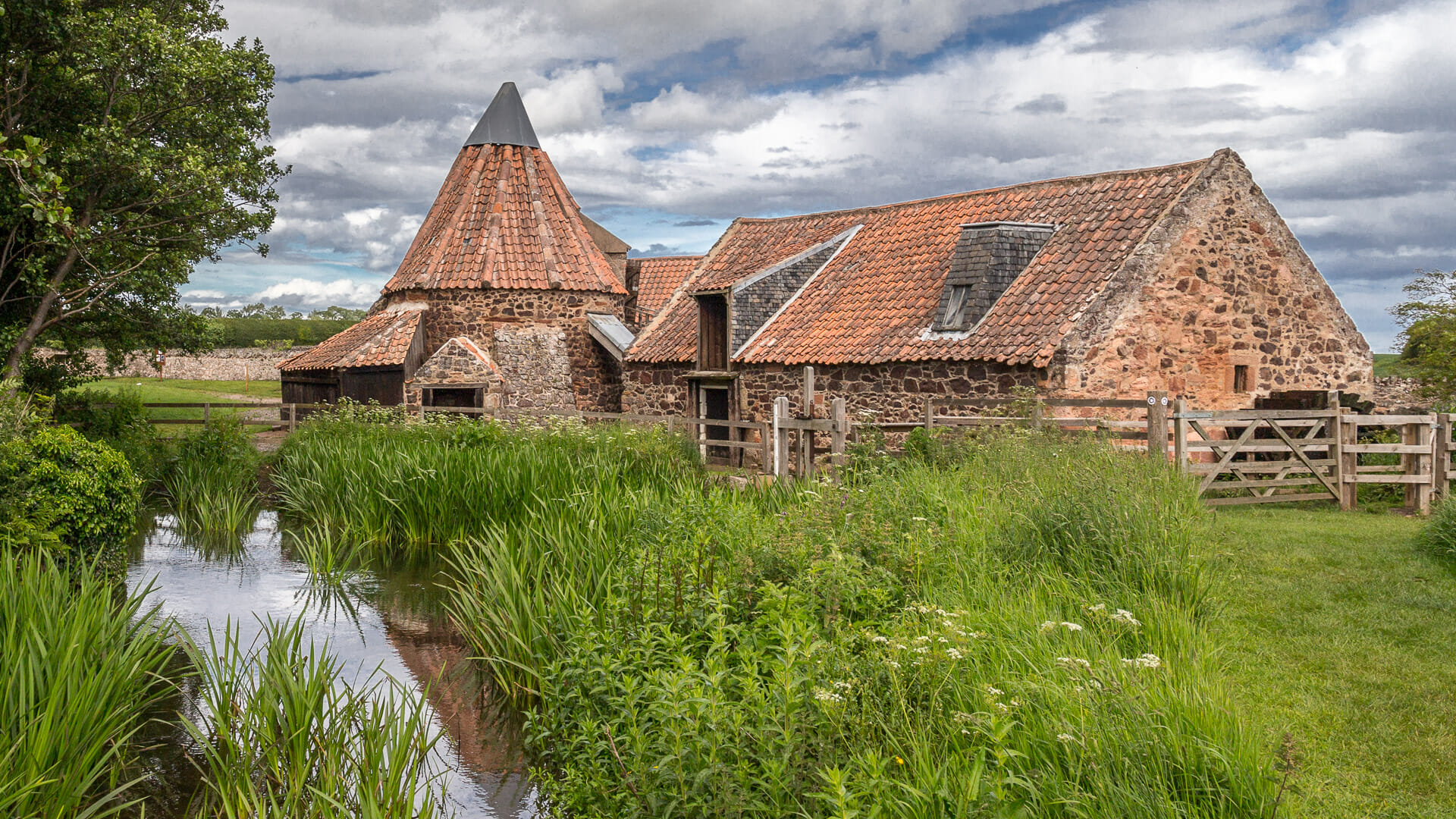
He liked to throw branches into the mill wheel to block it. Then Geordie, the miller, would come roaring out of his mill and chase him. The miller never caught him. The miller is long dead and the boy is an old man. But his fate is still linked to Preston Mill; today he is a tour guide. And every now and then, when he talks about the rascal’s pranks, there is still a flash of boyishness in him.
At Preston Mill, visitors (still) get first-hand information from people who have actually seen the mill in action. Grain was still milled here until 1959, and everyone in the village of East Linton knew the miller. The mill was also a meeting place for the community, a centre for gossip – in front of the miller’s family cottage. Today, the house houses an exhibition about life in the mill.
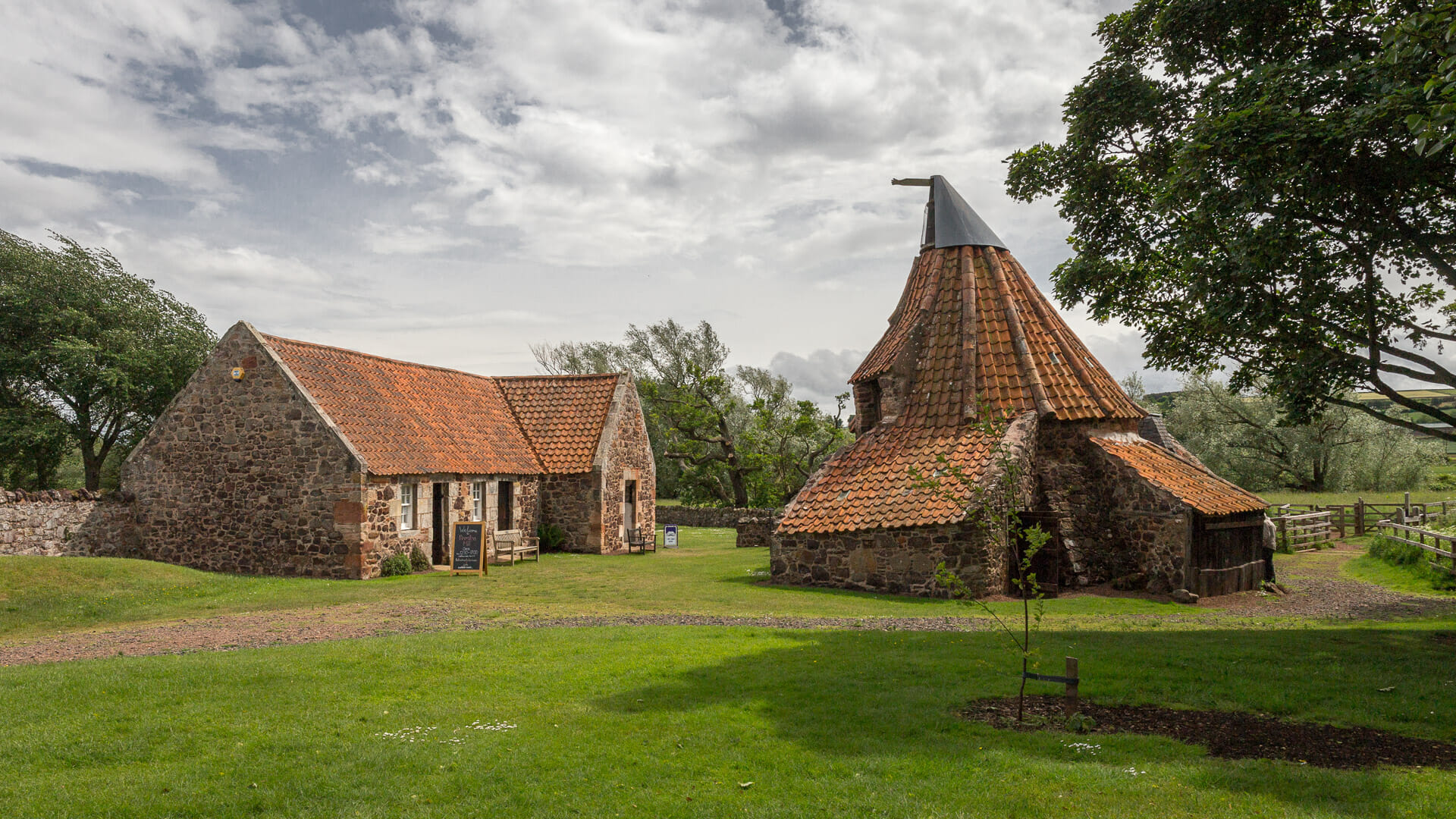
Visitors can still gossip here, as there is ice cream, a café and a bench with a view of the mill. You can only get into the other buildings as part of a guided tour and you may have to wait a few minutes here.
Preston Mill is certainly not a typical Scottish mill: the owner at the time had the building modelled on Dutch windmills – albeit without the wings. The result is a rather crooked and marvellous structure with an enchanting charm.
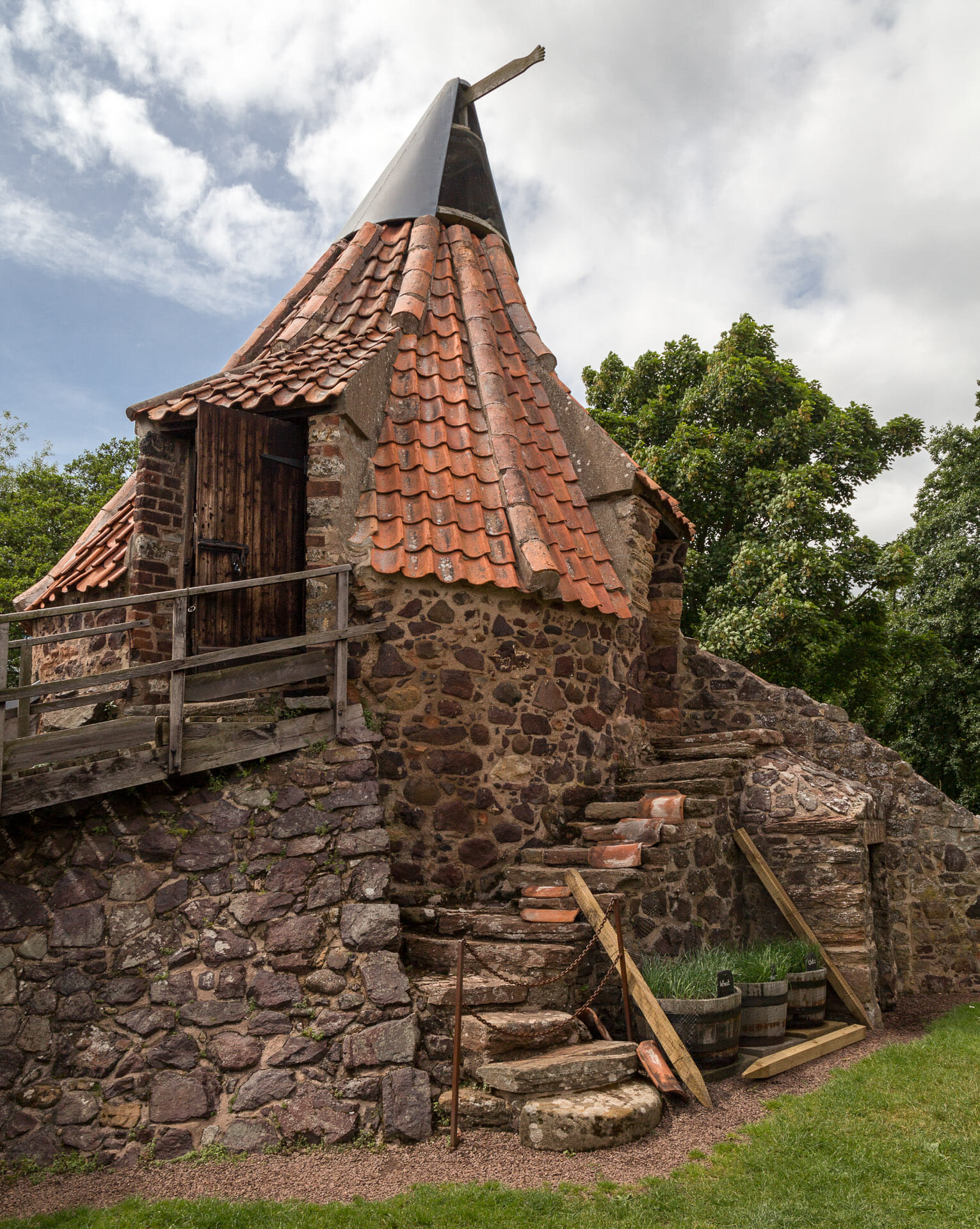
Enchanting for us, but not for the miller who had to work here. What looks like a magical hat is the mill’s drying floor. Here, a fire was lit at the bottom, the heat from which dried the grain at the top – almost like making whisky. To do this, he also had to turn the grain several times. A back-breaking job that was not good for his health. He breathed in dust and grain husks, while the smoke was drawn upwards through the roof. The top is rotatable so that the smoke could always escape with the wind. Sometimes to the annoyance of the neighbours.
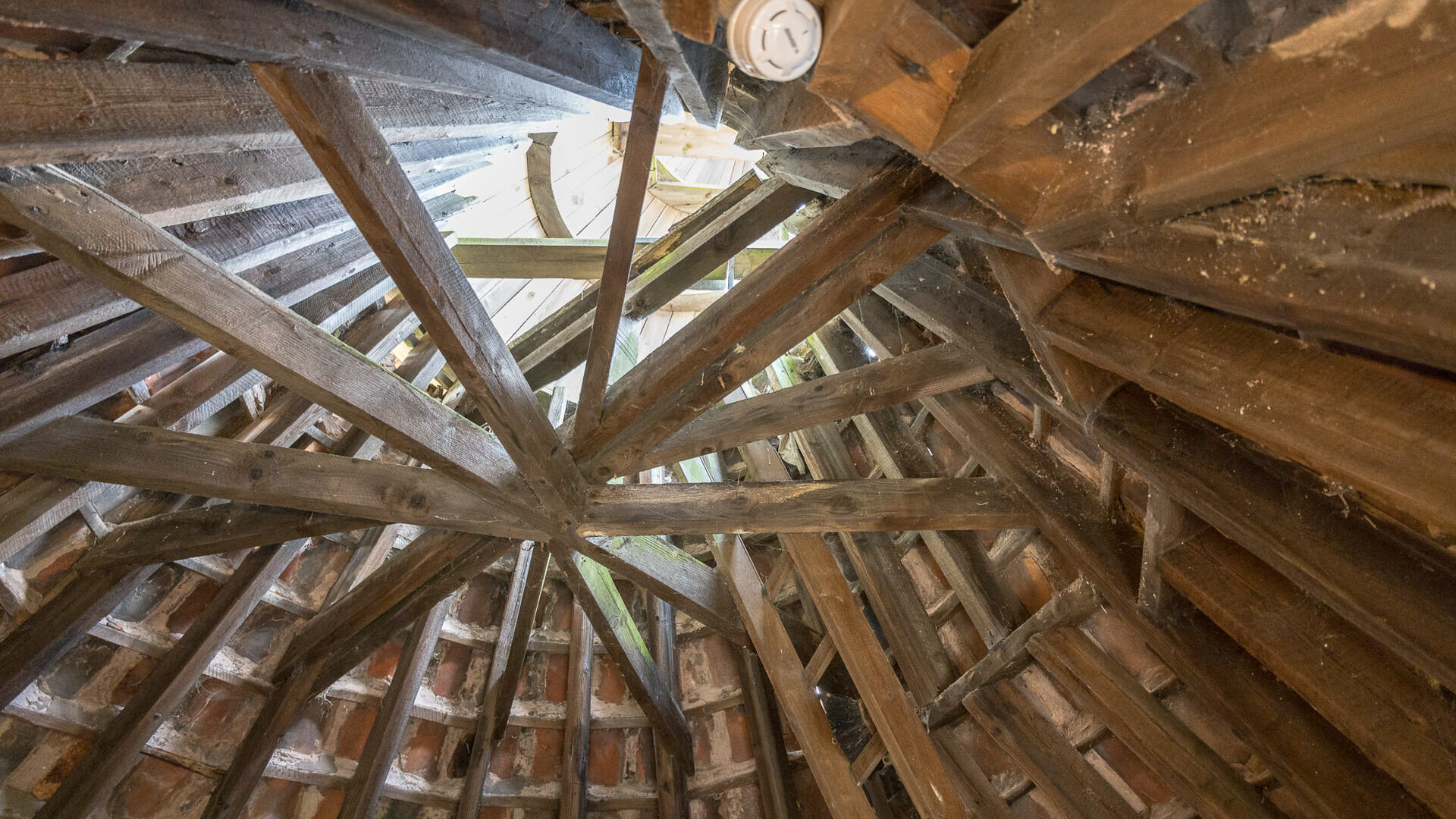
Drying usually took place at the beginning of the week. In the remaining days, the grain came in sacks from the drying floor to the mill house. Hauling the sacks was hard labour.
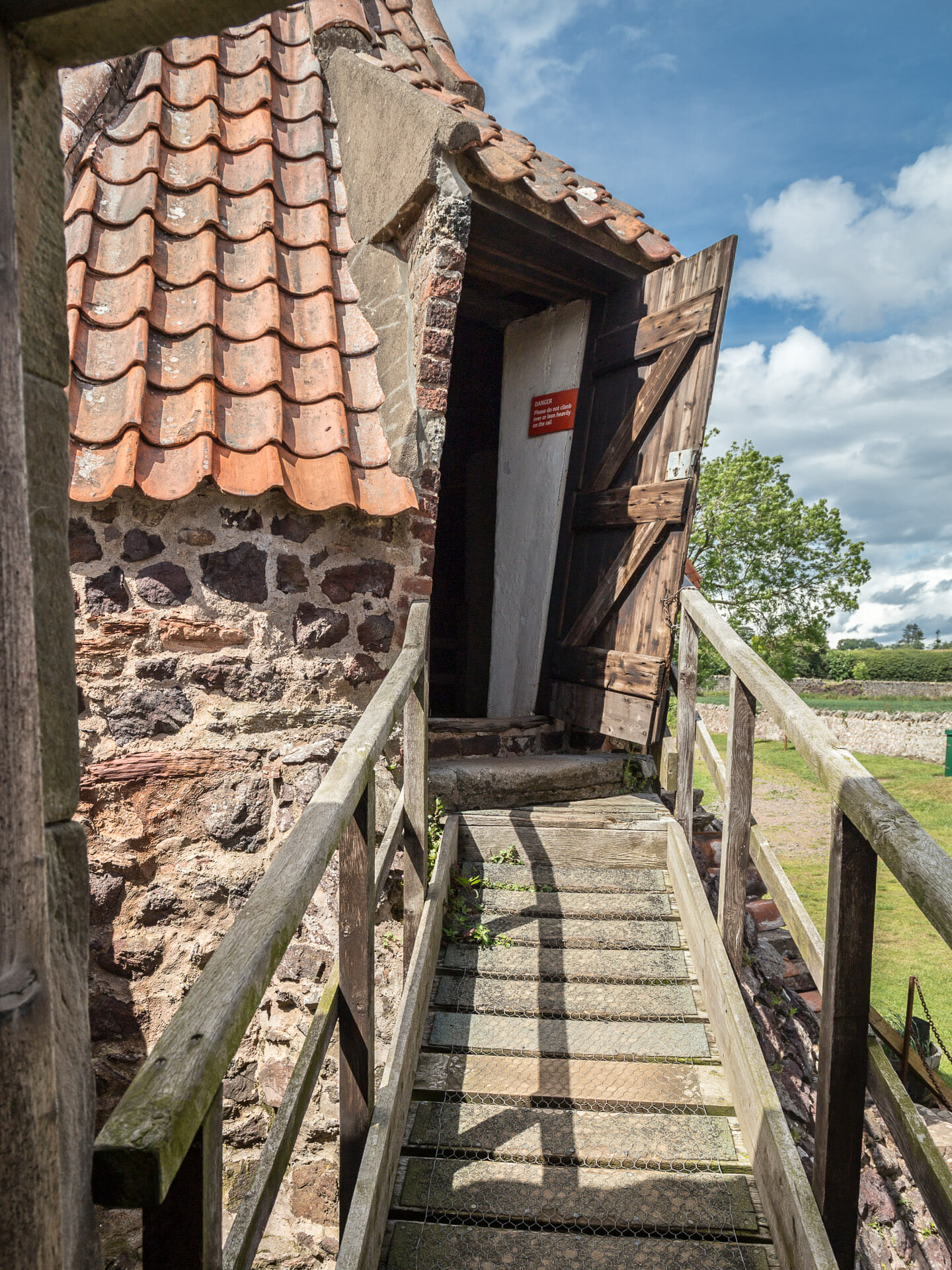
Nevertheless, in the two-storey main building of the mill, the miller was helped by a marvel of the technology of the time. It is still fully automated today. The energy is provided by the water wheel on the mill stream, which was drawn from the nearby River Tyne.
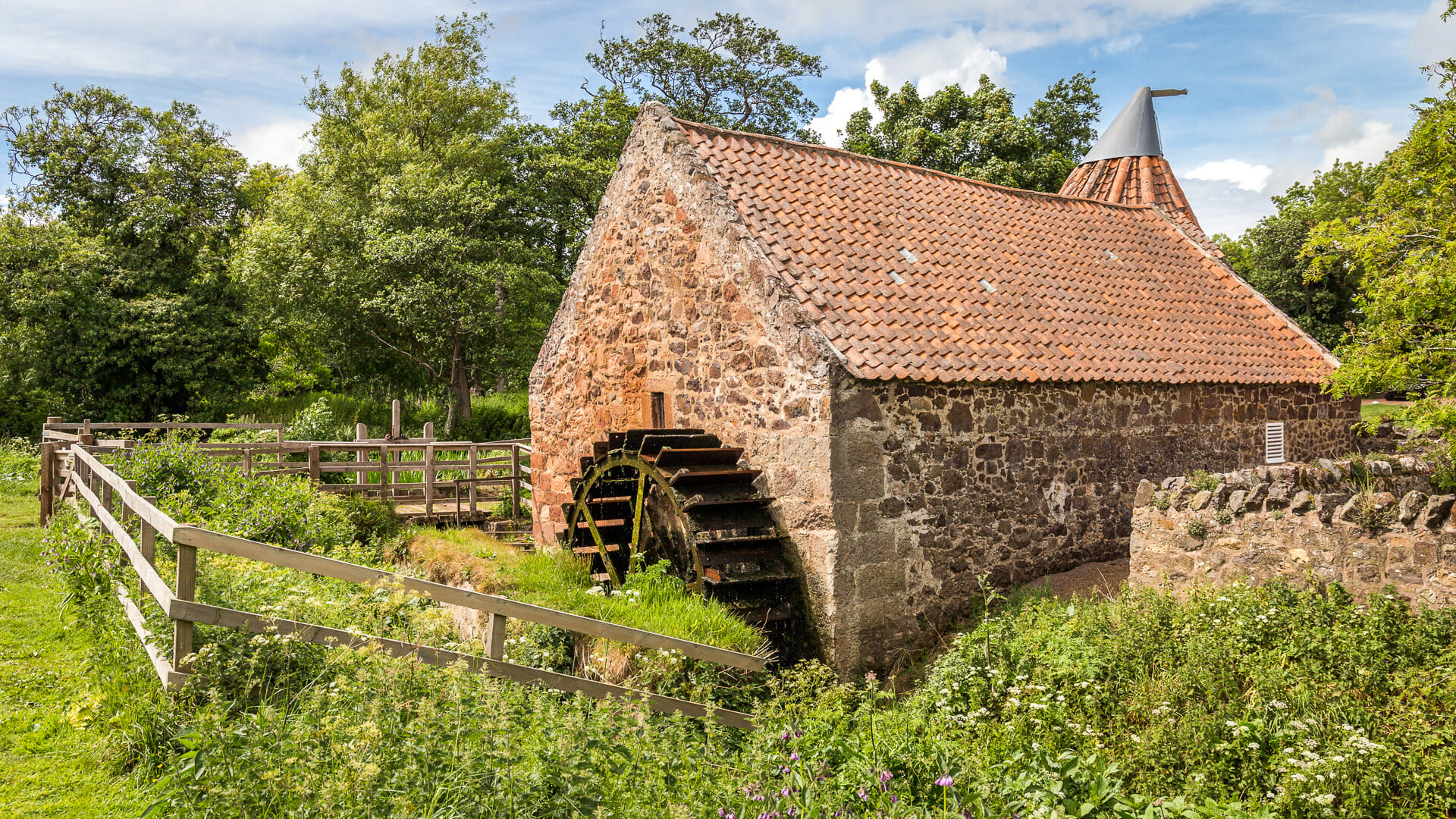
In the past, the miller decided whether it should turn, today the guide uses a rod, which in turn directs the water onto or away from the wheel by means of a flap. As soon as the mill wheel starts to turn, the inside of the mill comes to life:
This is probably one of the reasons why there are only guided tours of the mill. Only the guides can and are allowed to demonstrate the mechanisms around the mill. And it’s worth experiencing the gears from around a hundred years ago in action.
In addition, various scenes from everyday life are depicted here, and even the miller himself can be found inside.
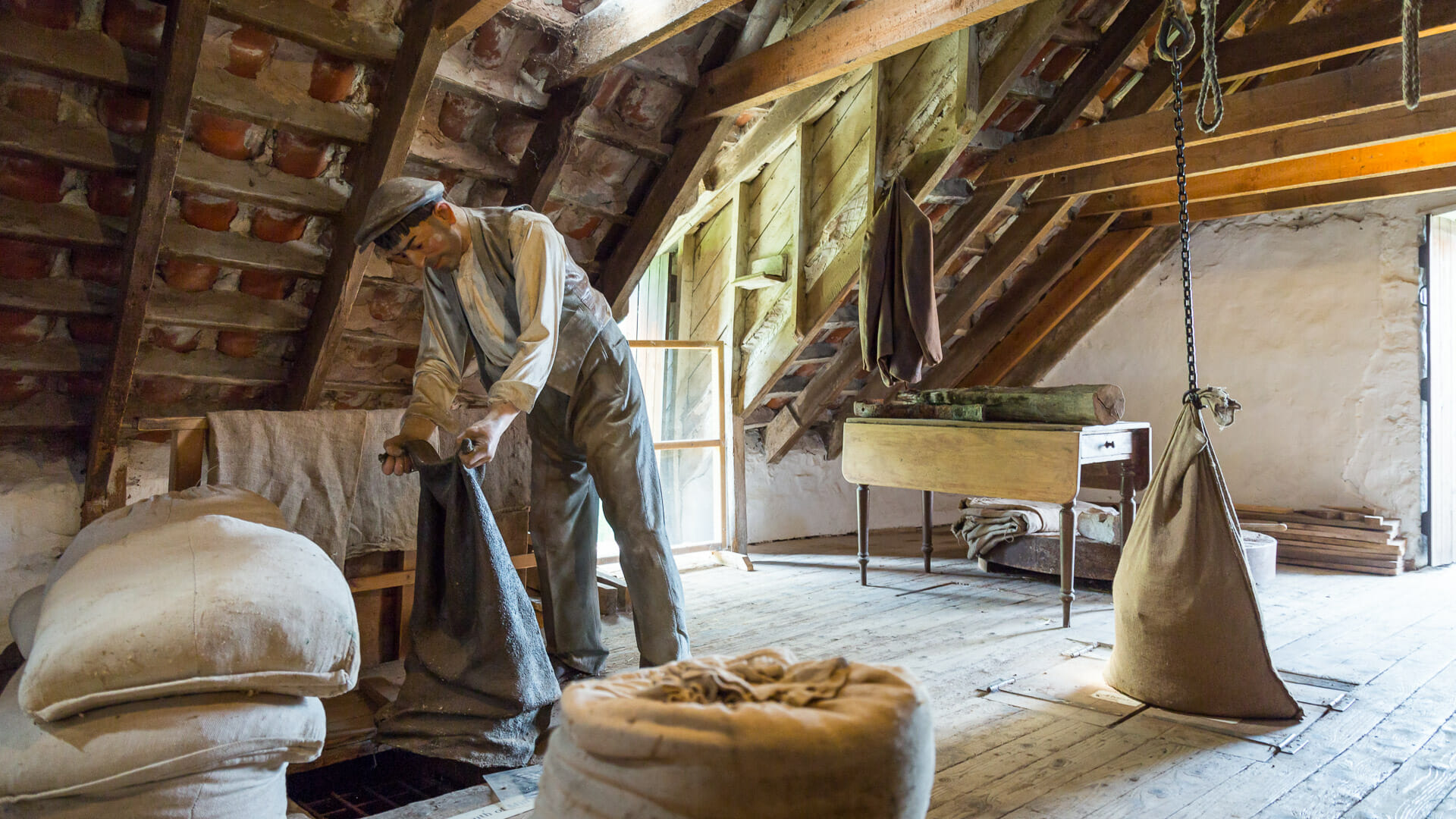
The scenes, the demonstrations and the explanations of the old tour guide breathe life back into the old mill. And even those who have little enthusiasm for technology will know afterwards how the grain that supplied the surrounding area was once milled here.
Film set: A naked Outlander
Preston Mill has become somewhat famous in the meantime. As in the case of several other places, the story of Outlander is to blame. In episode twelve of the first season of the TV series, Preston Mill plays the role of the mill on the lands of Lallybroch, Jamie’s estate. Dressed only in a shirt, he unceremoniously jumps into the mill stream to get the jammed wheel moving again. When he reappears, however, he is wearing nothing at all – and so a nude scene made Preston Mill a little more famous.
Knowledge: The history of Preston Mill
It is probably impossible to say exactly how long there has been a mill here. Some sources say that grain has been milled here since the 13th century. However, the current buildings probably date from the 18th century. The mechanism inside dates from the 19th and 20th centuries.
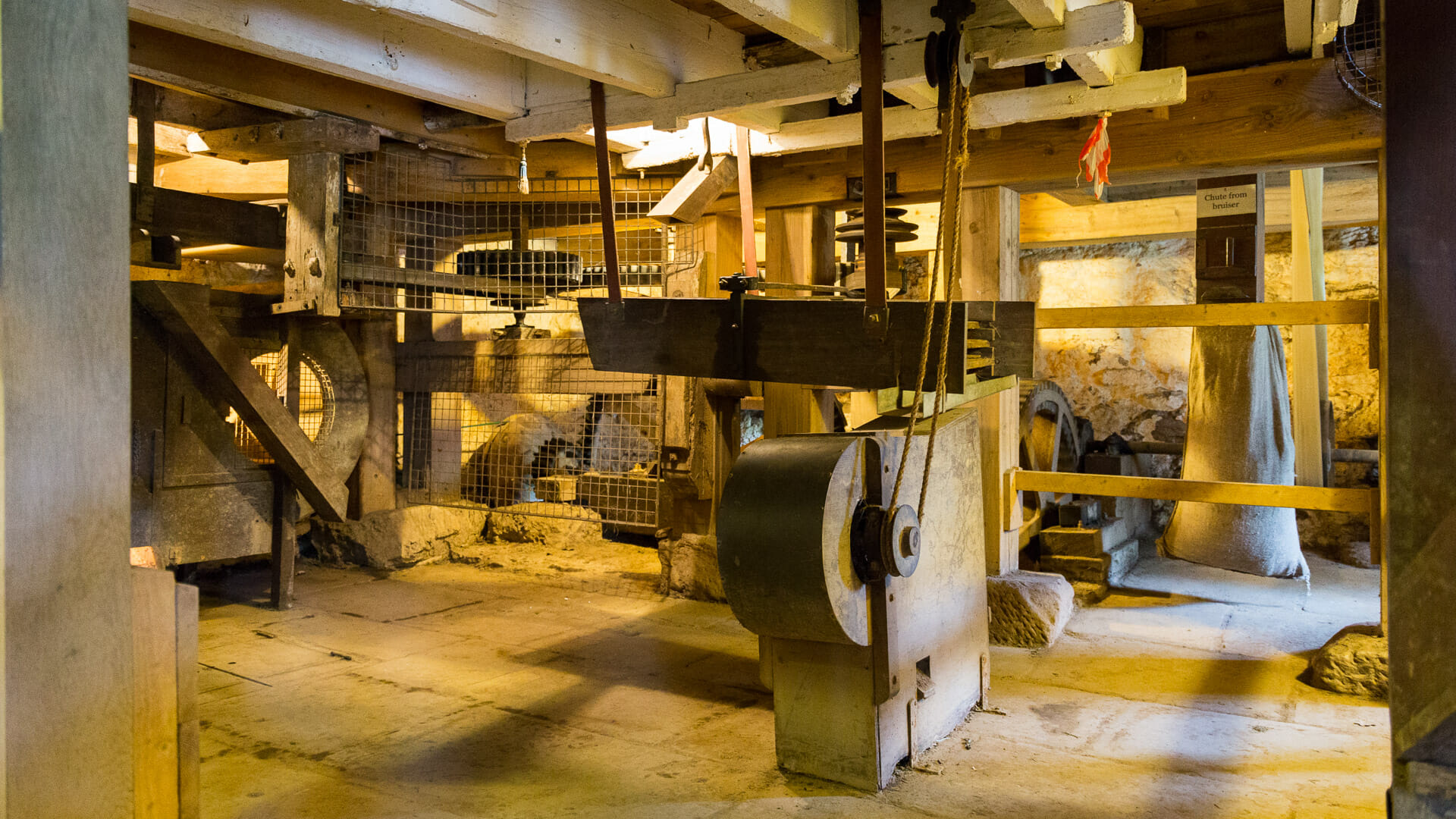
The location of the mill has not always been ideal over the centuries. The nearby River Tyne overflowed its banks several times and also flooded the mill. The highest water levels of the last century were recorded on the outer wall. in 1948, the water was up to the roof.
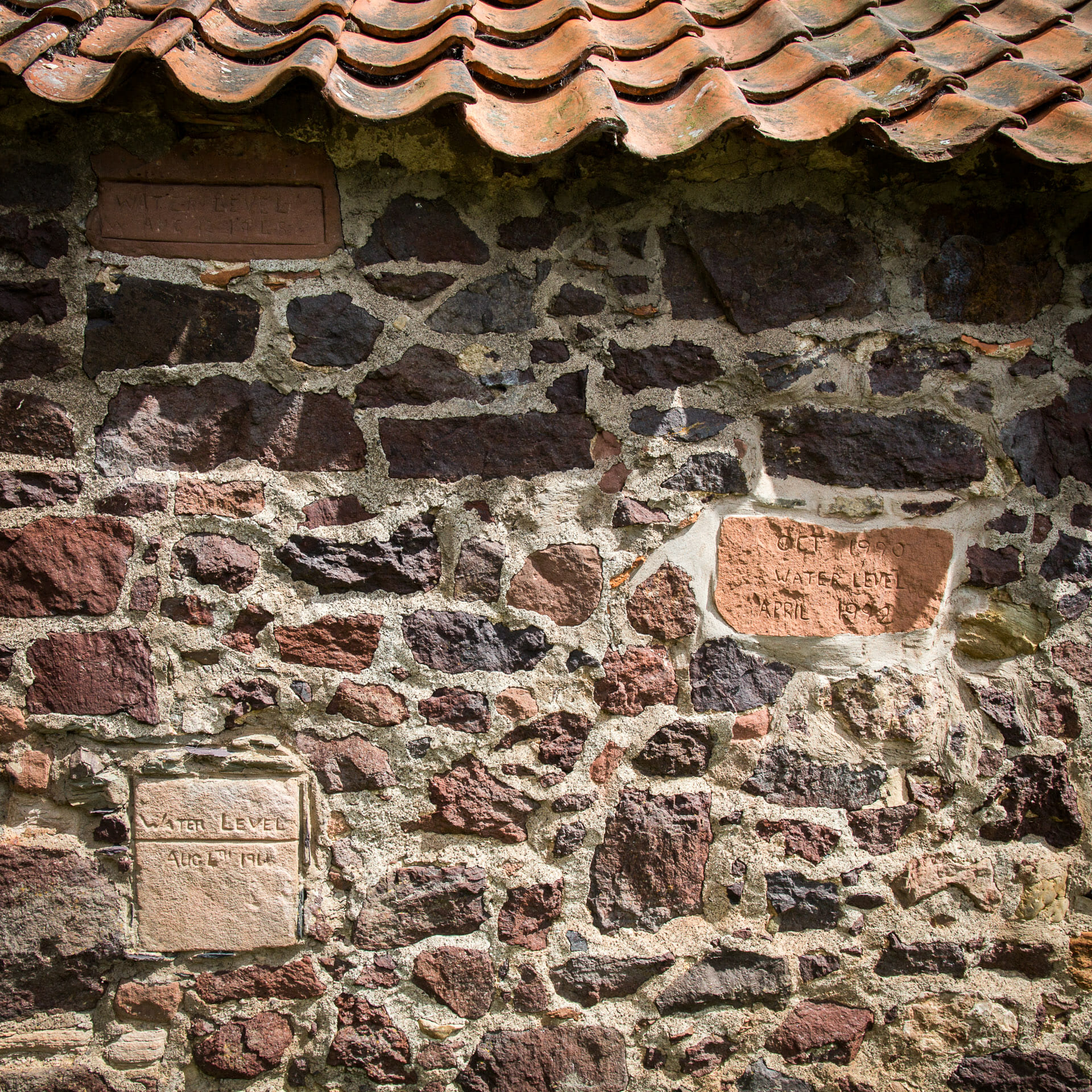
Tip: A walk to Phantassie Doocot across the River Tyne
For a bit of exercise, take a short trip to Phantassie Doocot. The interesting dovecote is around 500 metres away. The path first leads over a bridge on the River Tyne.
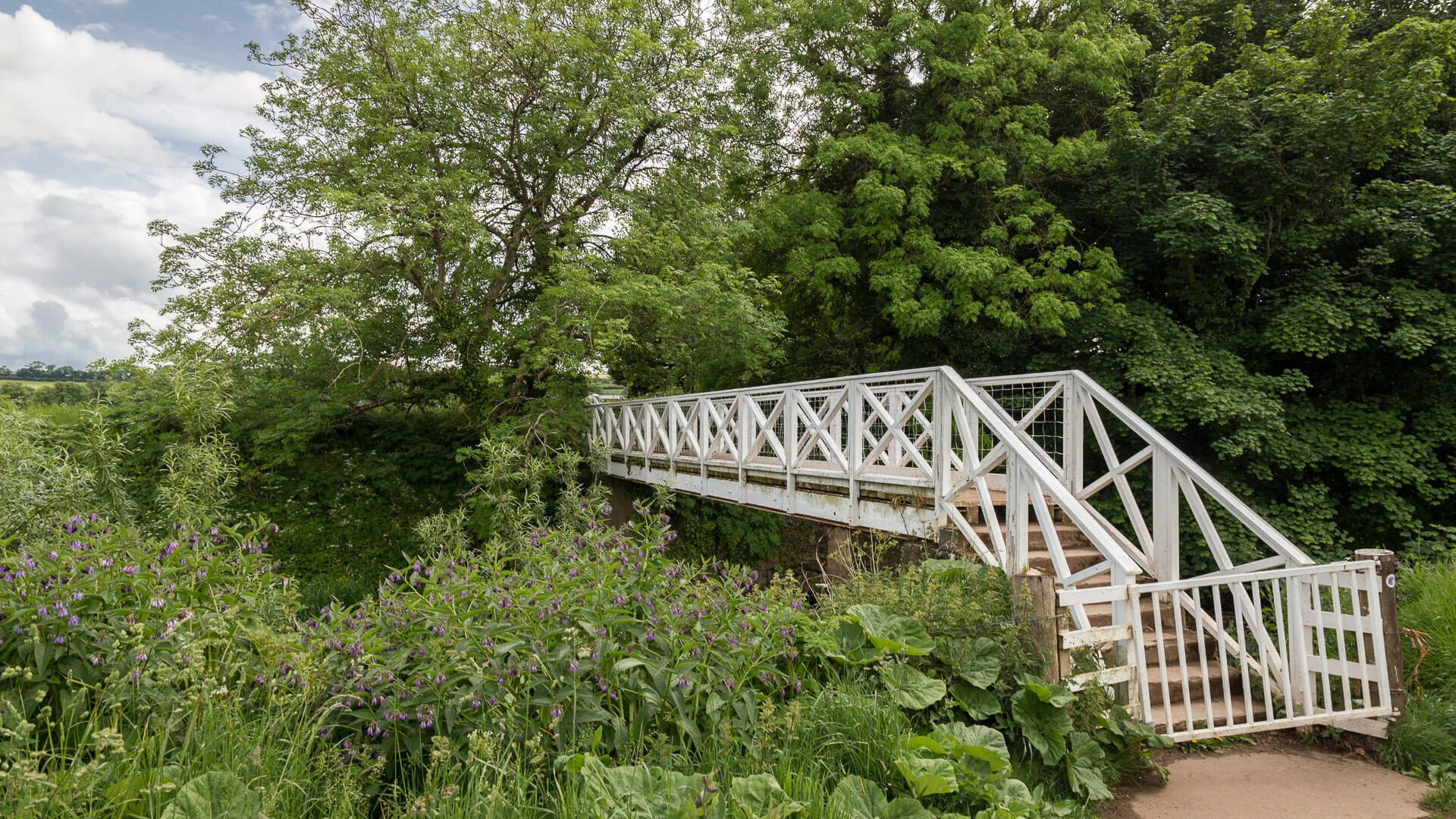
On the way, the walker has a beautiful view of East Linton.
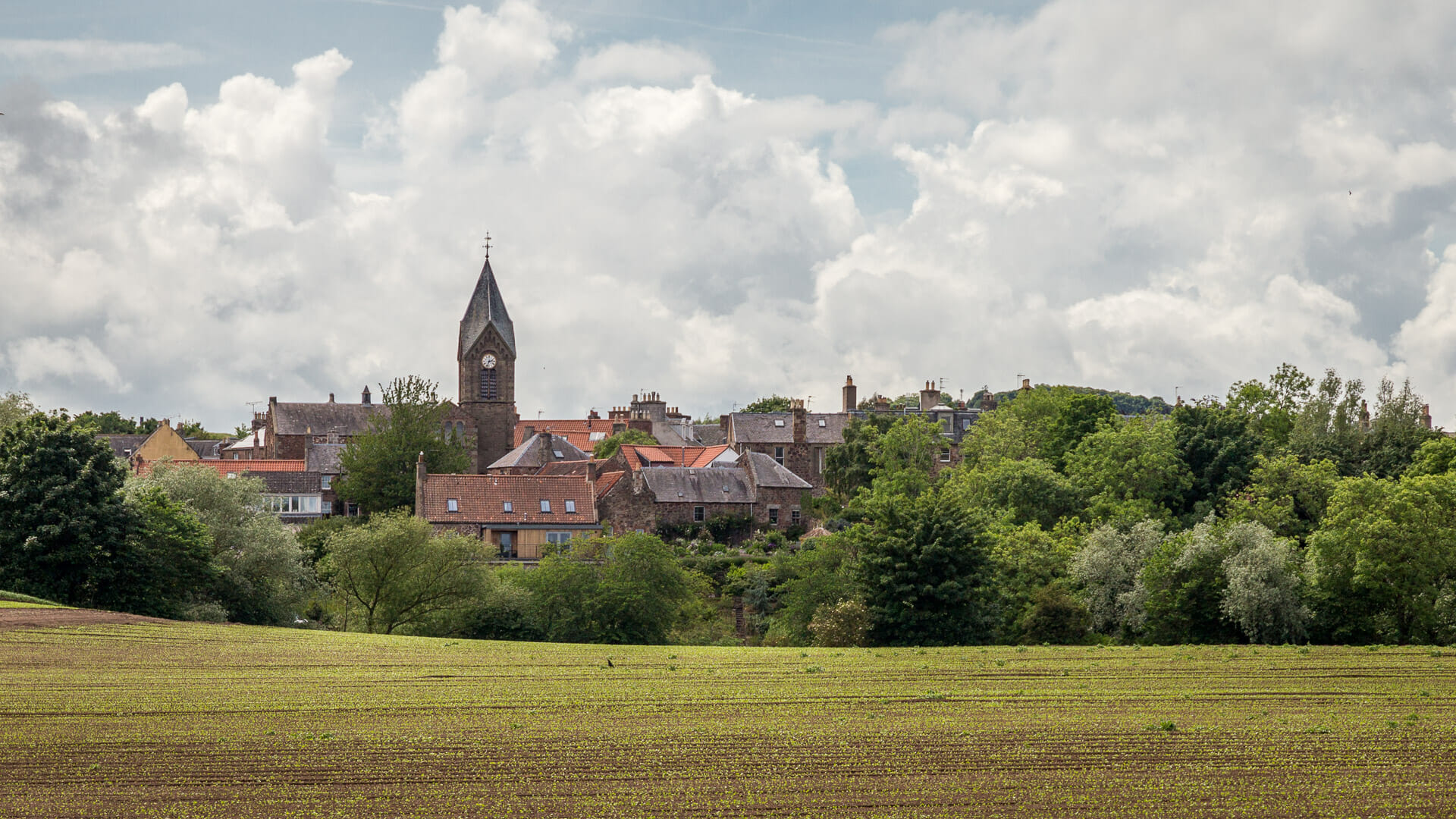
The dovecote, on the other hand, is not a beauty (compared to Tantallon Castle nearby, for example). But it is unique in its form and dates back to the 16th century.
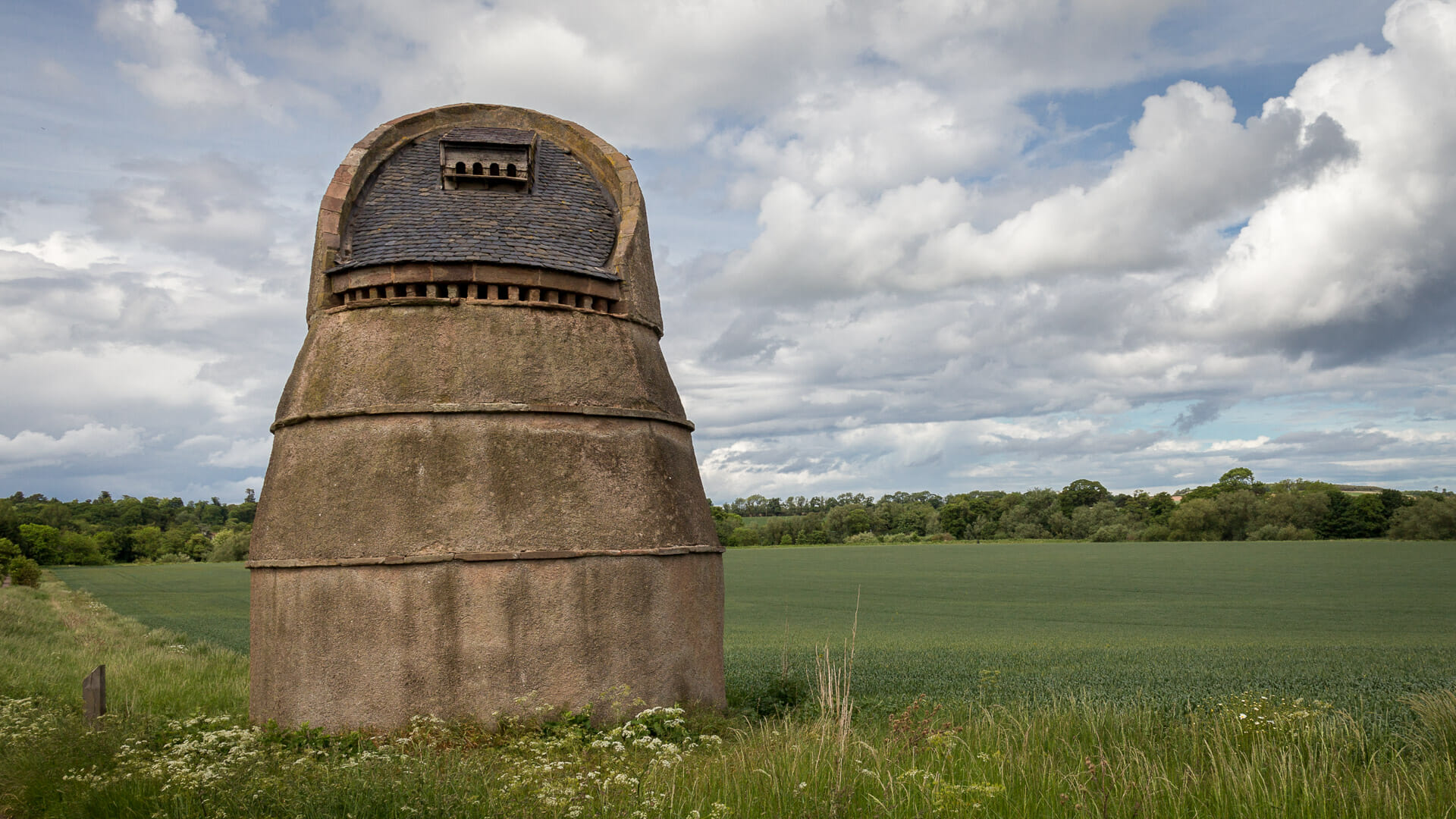
Pigeons were a delicacy in those days and rich landowners kept them in lofts like this. The problem was that the 500 or so pigeons in them fed on the farmers’ seed and the mill’s grain. The pigeon loft was therefore not very popular with the miller.
How to get there:
Preston Mill is about 40 minutes by car from Edinburgh.
With satnav: Enter “EH40 3DS” and then look out for the blue signs.
Without sat nav: In Edinburgh, take the A1 towards Berwick. Take the exit for Haddington and East Lindon onto the A199. At the first roundabout take the exit for North Berwick and East Linton. After a while, East Linton is indicated half a mile to the left. You will also see a blue sign for Preston Mill. Drive into the village. Turn left into the road immediately after the railway bridge. There is another sign here, but you may overlook it after the bridge. Continue through the village and after a hamlet you have to be careful, because then Preston Road turns off to the right, again with the blue sign for the mill. You pass a church and can already see the end of the village and the road behind it. But be careful! Before the last house on the right is a gravelled driveway. Here, too, there is another blue sign. Follow the road and park your car in the car park by the mill.